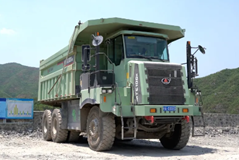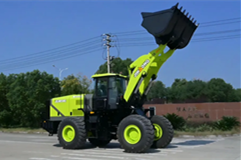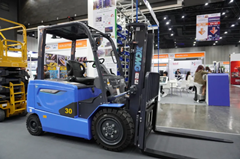XCMG internal combustion counterbalanced forklift, low consumption and strong po
June 20,2024
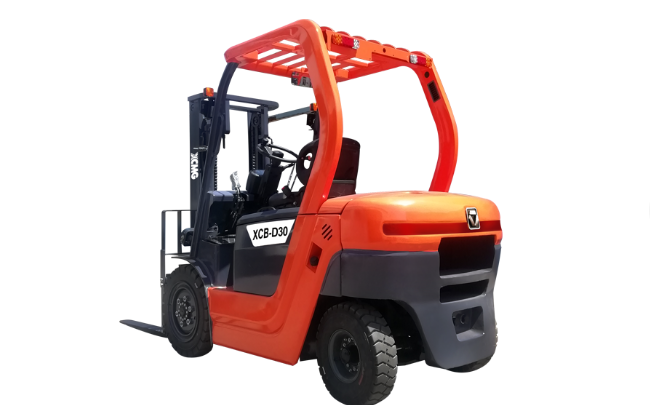 It adopts direct injection combustion system and optimized combustion chamber structure, with good starting performance, low fuel consumption, large torque reserve and strong power; the fuel system adopts electronically controlled distribution pump and high-pressure common rail, with stable idle speed, low noise and emissions meeting the National III emission requirements; the whole machine has high reliability and durability.
It adopts direct injection combustion system and optimized combustion chamber structure, with good starting performance, low fuel consumption, large torque reserve and strong power; the fuel system adopts electronically controlled distribution pump and high-pressure common rail, with stable idle speed, low noise and emissions meeting the National III emission requirements; the whole machine has high reliability and durability.
Rated load: 3000-3500kg Lifting height: 3000mm Power type: diesel
XCMG XCB-D/XCB-DT series internal combustion counterbalanced forklifts are based on XCMG's own core technologies and components, and implement the golden standard of "leading technology and durable use" to create a cost-effective internal combustion counterbalanced forklift product.
1. Power system
Adopting a direct injection combustion system, the combustion chamber structure is optimized, with good starting performance, low fuel consumption, large torque reserve, and strong power; the fuel system adopts an electronically controlled distribution pump and a high-pressure common rail, with stable idling, low noise, and emissions that meet the National III emission requirements; the whole machine has high reliability and durability.
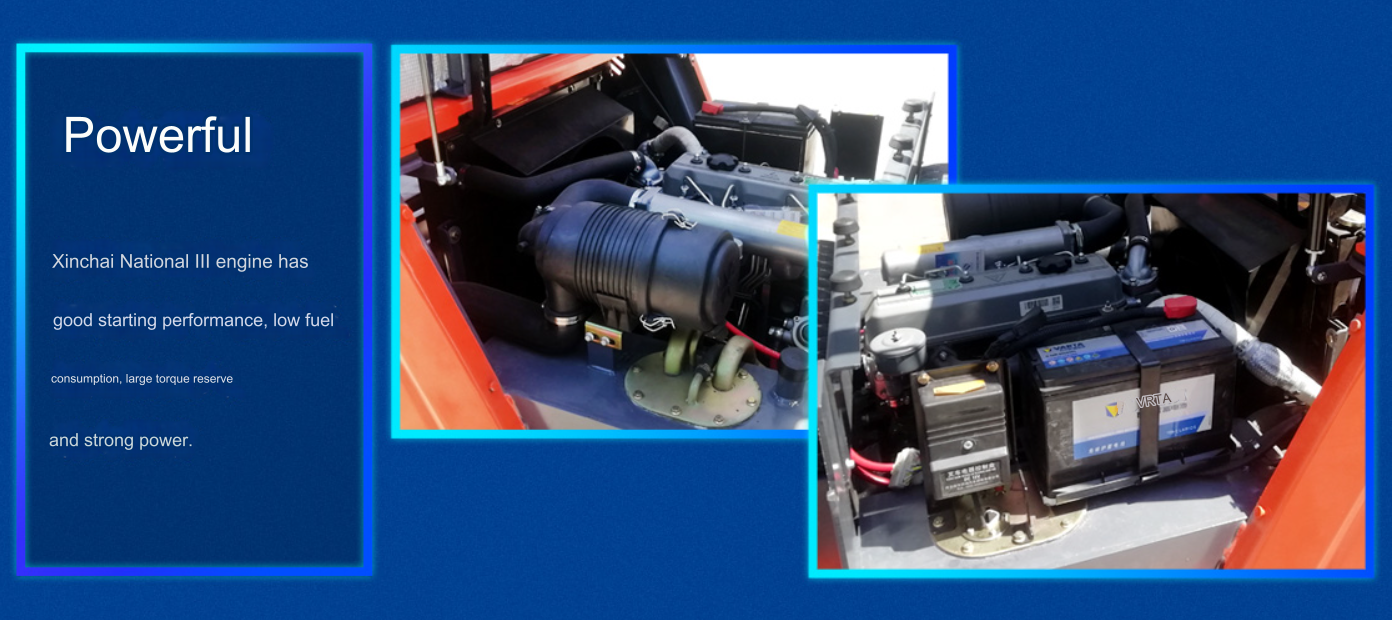 2. Transmission system
2. Transmission system
The transmission system transmits the power generated by the engine to the driving wheels and working mechanism, so that the forklift can travel and operate. That is, by reducing speed and increasing torque, changing speed and rotation, engaging or disengaging power, and changing the direction of power transmission, the power device can adapt to the travel and operation needs of the forklift. The transmission system consists of a clutch, a transmission, and a drive axle.
(1) The hydraulic transmission forklift is equipped with a torque converter and a power shift transmission, which has the following advantages:
a) The micro-motion valve allows the forklift to perform micro-motion operation at low or high engine speed;
b) The hydraulic clutch is equipped with multiple pairs of specially treated paper friction plates and steel plates, which improves its wear resistance;
c) The one-way overrunning clutch installed in the torque converter improves the power transmission efficiency;
d) There is a better filter in the torque converter oil circuit, which increases the life of the torque converter;
(2) Transmission:
The transmission consists of a speed transmission structure and a speed control mechanism. The main function of the speed transmission mechanism is to change the torque, speed and rotation direction; the main function of the control mechanism is to control the transmission mechanism to achieve the change of the transmission ratio of the transmission. Functions of the transmission:
a) Expand the range of drive wheel torque and speed to adapt to frequently changing driving conditions and make the engine work under better working conditions.
b) Make the vehicle drive in the reverse direction without changing the direction of engine rotation.
c) Interrupt power transmission to start the engine, idle and coast, etc.
 (3) Drive axle
(3) Drive axle
The function of the drive axle is to transmit the power from the transmission output shaft or universal transmission device to the drive wheels, reduce the speed to increase the torque, change the direction of the torque, achieve differential, ensure the pure rolling of the wheels, and carry the load. It consists of a main reducer, a differential, a half shaft and a drive axle housing.
3. Steering system
The steering system mainly consists of a steering wheel, a steering bracket, a steering column, a connecting flange and a steering gear. The steering wheel is connected to the steering column, the connecting flange and the steering gear. The steering column can be tilted forward and backward to an appropriate position to provide the driver with a comfortable driving position.
The load sensing full hydraulic steering system circuit is equipped with a priority valve, which can ensure that the flow is allocated to it first under any working conditions and ensure sufficient oil supply. When the steering gear is in the middle position, only a small amount of flow passes through the steering gear, which has a good energy-saving effect.
The steering axle consists of a steering axle body, a steering cylinder, a connecting rod, a steering knuckle, and a steering wheel. The pressure oil pushes the steering knuckle to turn through the cylinder piston rod and the connecting rod, causing the steering wheel to deflect, thereby achieving steering. The steering axle is connected through a buffer seat.
4. Braking system
The braking system is a front double-wheel braking type, consisting of a master brake cylinder, brakes and brake pedals. The braking power source can be divided into power braking and ordinary braking. The power of the power brake comes from the high-pressure oil generated by the gear pump, and the power of the ordinary brake comes from the driver's foot.
5. Hydraulic system
The hydraulic system is mainly composed of five parts: power mechanism, actuator, operating mechanism, auxiliary device and transmission medium. The main components include: gear pump, multi-way valve, multi-way valve operation, lifting cylinder tilt cylinder and oil tank.
6. Frame system
Modular design, all structural parts are processed by large-scale CNC laser cutting, and the formed parts are formed by CNC bending machine and hydraulic press die molding; the machined parts are processed by large-scale CNC machining center, and the processing accuracy meets the design requirements of the whole machine.
7. Overhead guard system
Integral welded overhead guard. The shock-absorbing pad is used to connect with the frame assembly to reduce the resonance caused by engine idling and whole machine operation, and improve the comfort of the operator.
Source : www.51cm.com
Views : 4841
Tags : XCMG forklift

